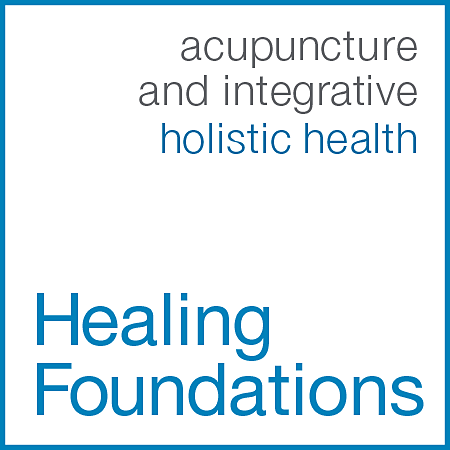Rebecca and Lisa take time out for Q&A
Congratulations on 4 years! For a small business in a competitive field, what's the experience been like?
Lisa: We're really so pleased to have been here 4 years already. It seems like just yesterday that we opened, but when we think about how many people who've come to us for care, and the community we've become a part of, we're really amazed. Rebecca: It's hard to believe how much we've learned and grown. In a lot of ways we've already achieved what we set out to, but we realize how much more there is to do.
What were your goals when you opened Healing Foundations?
Rebecca: Well, obviously we wanted to practice acupuncture, but we also wanted to create a special kind of environment to do it in. We wanted to create a sense of community- with our clients, fellow practitioners, and with the businesses and neighbors in Roscoe Village. Lisa: That's right. Practicing acupuncture and Oriental medicine is what we do, but how we do it is really important to us. Four years ago we built our space to create the kind of place we wanted to work in, but also an atmosphere to foster the health of our clients and to support other wellness based practitioners. It's a cumulative effort. Making acupuncture accessible is important to us. We offer reduced cost services to retired and active military personnel, and outside of the clinic we volunteer our services at charitable organizations, plus we're active within the local chamber of commerce.
How have you and Healing Foundations grown over the past four years?
Rebecca: Oh boy. Well, I went from being a single gal to being married and having a baby! My personal growth has been pretty amazing, and that's gone hand-in-hand with Healing Foundations and my growth professionally. There's no replacement for experience. I think we just have a richer and broader approach than when we first started. Much of that is from building relationships with clients and being exposed to so many different scenarios, but we're always studying new methods and the evolution of the practice of acupuncture. Lisa: We are fortunate and thankful for the clients who've come to us for help. Some people we see only a few times for an acute issue, and it's satisfying to help them and set them on their way. Others clients, we've built relationships with– Healing Foundations being a part of their long-term wellness care. Both kinds of clients give us opportunities to grow personally and professionally. It's also gratifying to support other practitioners. We've been able to help a few practitioners get their start in business, and we've become a long-term home for terrific people like Revital [Peremen], Jennifer [Gaspers] and Massimo [Cifali].
What do you want people to know about Healing Foundations that they don't already know?
Lisa: I think our challenge isn't about what people know about Healing Foundations; they only need to come see our clinic or talk to us, or one of our clients. It's more about understanding how acupuncture and the other therapies we offer are not a last resort. Too many people turn to acupuncture after other treatments fail. Much of what we do is still considered "alternative medicine", and that's slowly changing. We'd like to see more people choose to explore a drug-free, holistic approach to their health as a first choice, in conjunction with Western allopathic medicine, rather than a last hope. Rebecca: Our repeat clients know what to expect from their experience at Healing Foundations; I do wish we could better communicate the ways that we work with our clients, not just on them. Many people are accustomed to a hands-off approach to healthcare; an office visit followed by a prescription. We work more closely with our clients, not only asking questions before and during treatments, but after. We want them to call us and tell us how they're doing. With what we do, assessing, reinforcing or altering treatment comes within days, not weeks or months.
What's next for the future of Healing Foundations?
Rebecca: We'll continue to enhance and broaden the wellness options for our clients. We offer yoga classes, and are open to hosting more or different weekly options like meditation or kid's classes, depending on the community's interest. We really see what we do holistically, so we'll continue to be involved in the community, both as acupuncturists and as business owners. Lisa: We love being in Roscoe Village and are proud of what we have here. We're always looking for ways to make our client's experience more pleasurable, balancing the business end of the client experience with constantly improving the depth of their care. We stay up-to-date on treatment trends, and incorporate new modalities when it's appropriate. In the big picture, more of the same!





















